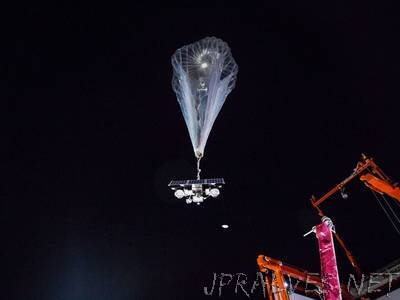
“LAST FRIDAY, ENGINEERS on Google parent Alphabet’s internet-by-balloon Project Loon tweeted that they hoped to bring emergency connectivity to Puerto Rico after Hurricanes Irma and Maria left more than 90 percent of the island without cellphone coverage.
Just seven days later, the Federal Communications Commission Friday gave the company a green light to fly 30 balloons over Puerto Rico and the US Virgin Islands for up to six months.
If all goes to plan, Alphabet’s balloons will soon help replace the thousands of cellphone towers knocked out of service by hurricane-strength winds. The balloons would provide voice and data service through local carriers to users’ phones.
The details of those arrangements aren’t complete. But in its application to the FCC, Alphabet included letters and emails from eight wireless carriers in Puerto Rico, in which they consented for Loon to use their frequencies for disaster relief and to restore limited communications. Two of those agreements were dated Friday.
Alphabet has previously deployed Loon to provide emergency phone service, in Peru following flooding there earlier this year. In Peru, Alphabet had already been working closely with a local wireless network, Telefonica, to coordinate spectrum use and prepare handsets to work with its balloons.
In Puerto Rico, “things are a little more complicated because we’re starting from scratch,” an Alphabet spokesperson says. “Loon needs be integrated with a telco partner’s network—the balloons can’t do it alone.”
Project Loon was born in Alphabet’s moonshot X division, with the aim of serving the half of the world’s population that is still without internet access. It has launched several successful pilot projects, but has yet to be deployed commercially on a wide scale. It also is embroiled in a lawsuit with Space Data, a small company accusing Alphabet of patent infringement, misappropriation of trade secrets, and breach of contract following a failed acquisition bid.
With the FCC’s special temporary license in Puerto Rico, Alphabet plans to work along the same lines as in Peru. Thirty Loon balloons will float 20 kilometers (12.5 miles) above the earth in the stratosphere, relaying communications between Alphabet’s own ground stations connected to the surviving wireless networks, and users’ handsets.
Each balloon can serve 5,000 square kilometers (1,930 square miles), so the fleet is expected to provide service over all of Puerto Rico and potentially parts of the US Virgin Islands. Alphabet said it would consult with networks in the British Virgin Islands to minimize interference there.
Another issue is that Alphabet’s technology is still set up for Peru, so some handsets in Puerto Rico may need updates to use the balloon-connected service. Alphabet says it is working on temporary over-the-air software fixes for affected devices, which could include handsets from Apple, Samsung, and LG.
With approval in hand, Alphabet will turn to launching the balloons. Alphabet could not say when it will fly or when service would begin, but a spokesperson said, “We’re sorting through a lot of possible options now and are grateful for the support we’re getting on the ground.”
Restoring voice and data communications cannot come quickly enough for some of the affected. On Tuesday, Mother Jones reported Puerto Rico governor Ricardo Rosselló as saying, “Some people, even though we’ve documented the fact… that we’ve delivered food and water, it hasn’t gotten to some of them. Now, it could be for a whole host of reasons. One of them could be that they couldn’t hear it; the information didn’t get to them.””
